Mollymawk arrives in Puerto Eden
Mollymawk has just arrived in Puerto Eden after a journey of six weeks in the Chilean channels.
Puerto Eden is actually only about 300 miles from Puerto Natales, which was the last place where we had contact with the outside world, and many yachts make this passage in a fortnight; in fact, some friends recently made the same trip in just four days! But Mollymawk is not in any hurry. We’re on a voyage of exploration – we want to see the place, and see it thoroughly, rather than just rushing on to the next venue. Moreover, we abhor motoring. That last factor is very relevant on a journey north through the Chilean channels, as will become apparent when we tell you more about our adventures.
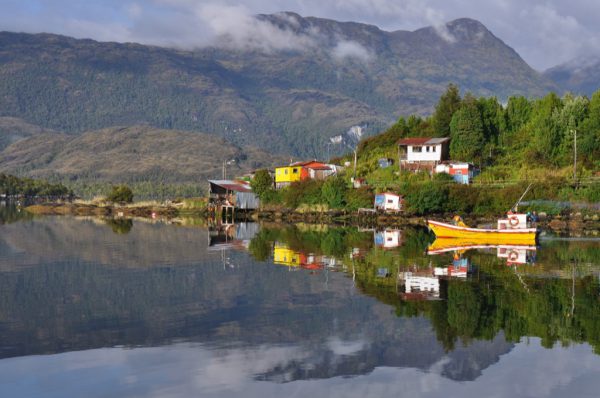
Puerto Eden is reputed to have the highest rainfall of any settlement anywhere in the world’ – and yet we have just had three consecutive days of sunshine! To put this in perspective – the locals can’t recall this ever happening before; and during the preceding six weeks, during our travels, we’ve had only two full days of sunshine and three sunny evenings.
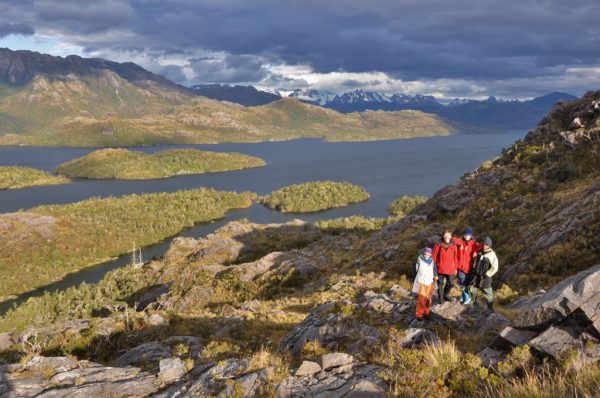
The two full days of sunshine arrived consecutively, and the first, since it also came with a fair breeze, was spent sailing. On that day we covered 52 miles, whereas more typically we’ve been managing only 15. Getting those 15 miles under our belt has involved zig-zagging to and fro in a narrow corridor between the mountains. On an average day we’ve tacked 25 or 30 times, but on one occasion we made 39 boards and on another we made 42.
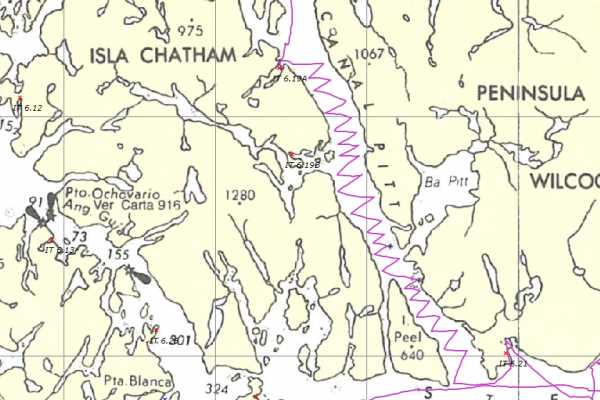
And always the rain. For every ‘pretty’ picture taken during this adventure I have about a hundred others depicting grey mountains, grey moorlands, and grey seas under grey skies.
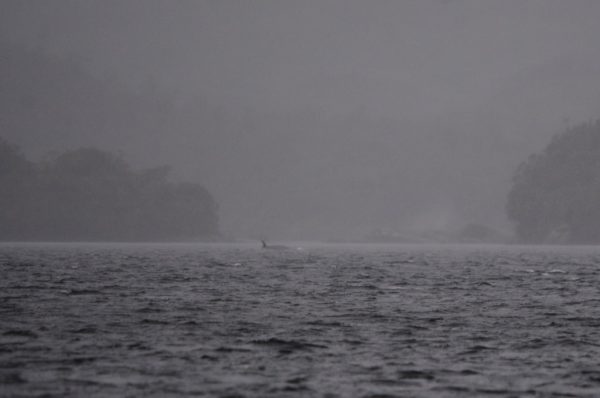
Having regard for the prevailing weather conditions, when the sun does rock up one is torn between either enjoying a pleasant day under sail or grabbing the opportunity to go for a walk. Or one could just take the opportunity to air the bedding and the boat, and to wash one’s hair…
Seriously! It’s hard keeping the mould and grime at bay in this climate; one has to snatch the chances as they come along. And as for going for a walk – walking, in this part of the world, refers to the activity of fighting your way through a dense mat of bushes in order then to scramble up rocks and go squelching through a peat bog. There are no paths, although you might sometimes find yourself following a fragile thread of bent leaves and trampled moss. These slender trails might have been created by the wicked fairies with the purpose of offering false hope to a lost soul, for having led you along for a hundred paces they end in a thicket or at the foot of a sheer rock face. I imagine they were made by foxes or by huemul (the local deer).
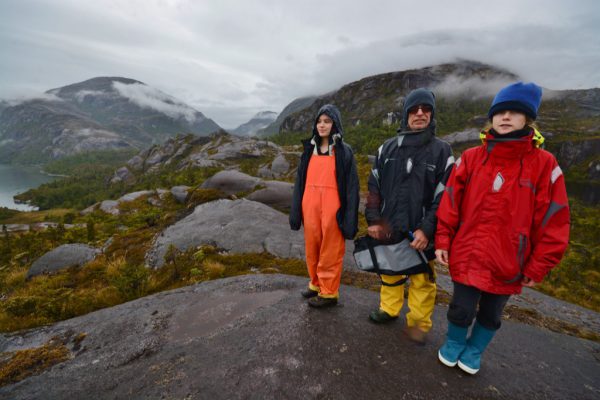
Such walking (as we call it) is fun on a fine day, if you have the energy; and after you’ve adjusted your mental settings it’s even enjoyable in the rain, up to a point. But when you come back to the boat you’re then stuck with (in our case) five dripping wet jackets and five pairs of dripping wet over-trousers. And that’s five extra, on top of the oilskins that you already have hanging around the place (because you’d be mad to go dragging yourself through the prickly bushes in your best wet-weather gear).
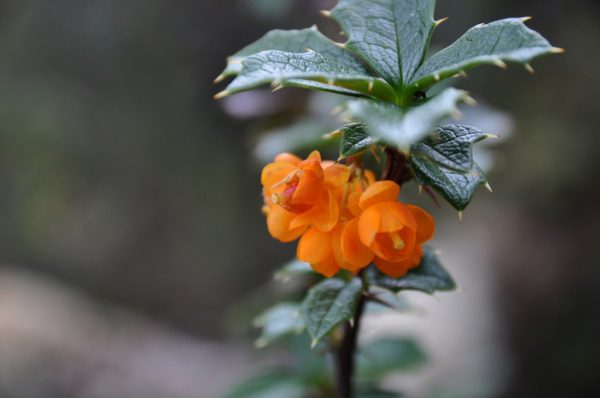
I seem to be making the Chilean channels sound like hell on Earth! I certainly don’t mean to do that. This incredible maze of islands and islets on the edge of the Pacific is actually a wonderful and very beautiful place – but it is a fact that cruising here is much more demanding than it is in the tropics; and this is especially the case if you insist on sailing. One of the most useful things which any visitor to this region should carry aboard his boat is the Patagonia and Tierrra del Fuego Nautical Guide, by Giorgio Ardrizzi and Mariolina Rolfo. In the introduction to this work – which describes more than 400 caletas, or coves, useful to the yachtsman – the authors suggest that “if there is a place where even the most intransigent purist sailor would want an engine, it is this one”; and they’re right. It’s not just that, if you’re travelling from the south, the wind is almost always on the nose; there’s also the fact that a foreigner can only get a visa which is valid for three months. Travelling from Natales to Eden without ever using the engine at all would have taken us the full three months – and Eden isn’t even a place where one can renew visas anyway! We still have to scurry along and fight our way north to Tortel or Chacabuco or Chiloe; and we now have only a month in which to do it!
Truth to tell, getting from Natales to Eden without an engine would not only be even slower, it would also be potentially rather dangerous. Every night during our travels we have pulled over and tucked ourselves up in some snug little niche, and seldom have the niches been big enough to allow the boat to swing to her anchor. Having dropped the hook one generally needs to take a couple of lines ashore, and holding the boat on station while doing this would be very difficult without an engine. Indeed, there have been many occasions when it would have been impossible; but for the use of the engine, the boat would promptly have swung onto the rocks.
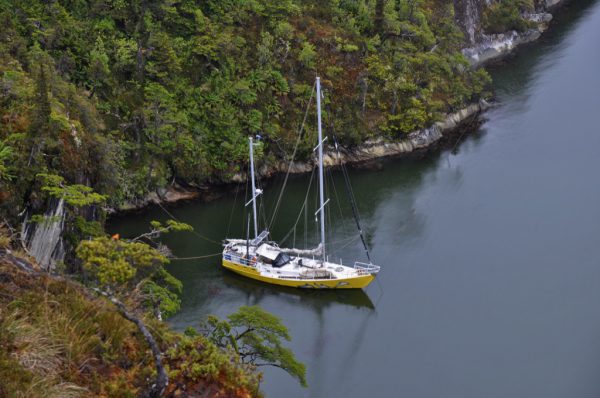
When he surveyed these channels with the schooner Adelaide, back in 1828, William Skyring was forever complaining of the lack of anywhere safe to anchor; and the anchorages which he used are generally very deep and seem to us to be very open. And that’s because – of course – he didn’t have an engine!
Without an engine we could not have got our fifty foot home into Caleta Mousse, in the Santa Maria channel; and we couldn’t have got into Caleta Dixon when the wind died while we were in the entrance to that bay. We couldn’t have got into Caleta Theleme, or into the inlet known as Moonlight Shadow.
We wouldn’t have got into Otterpool, where the wind in the entrance was straight onshore and blowing hard. We might have dared to sail through the narrow pass – only fifteen metres wide – at the mouth of Estero Dock, but we wouldn’t have been able to beat out again the next day; and we wouldn’t have wiggled our way up into Estero Gage or explored uncharted territory on the opposite shore in Seno Penguin.
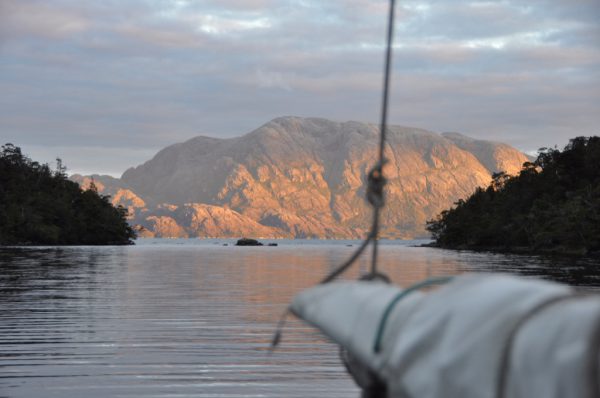
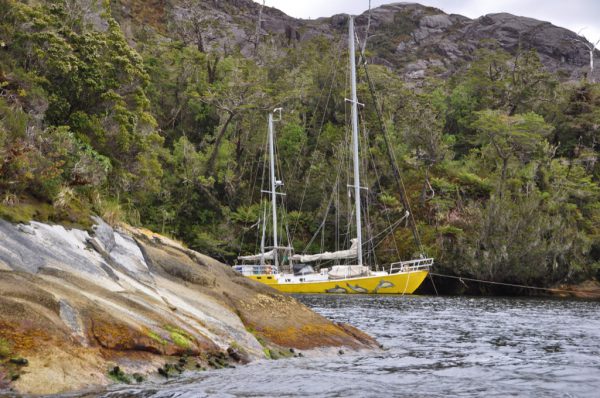
I could go on, but I’m sure you get the point. But for the engine – that ‘beast in the bilge’ which we Mollymawks seek always to do without – we simply could not have explored the Chilean channels in the way that we have.
But as a result of these explorations – and notwithstanding the fact that we have sailed, rather than motoring, whenever we could – during the past six weeks we’ve burnt 300 litres of fuel.
By comparison, when we’re cruising in the tropics we use, on average, 50 litres (two jerrycans) per year.
In penance, we’ve ‘offset’ our ‘carbon footprint’ by contributing to a project created by our good friend, Carolina Rodriguez, and her husband, Marvin Gabriel. Carolina and Marvin both have PhDs in the Conservation of Peat-Bogs and Wetlands – and, as you’ll have gathered, this is the habitat which, along with the forest, predominates in this region. Unfortunately the Chilean government seems not to be doing very much to protect this ecosystem – indeed, we are told that they still allow commercial exploitation of the peat for sale to Japanese gardeners… – and so Carolina and Marvin are trying to educate the local people on the importance of preserving what is generally perceived as a wasteland.
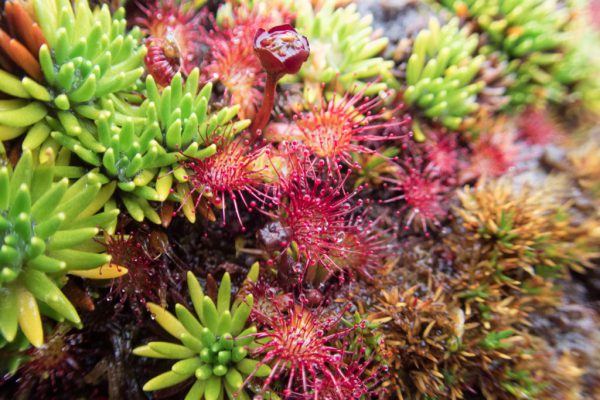
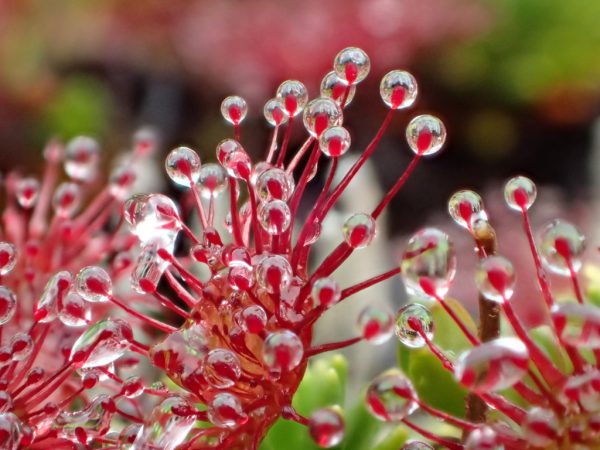
The change in climatic conditions has meant that bogs are drying out; and since they are the fundamental resource for almost all of the local terrestrial wildlife their preservation is absolutely vital. Since no government department has shown any interest in this idea Carolina and Marvin have set up their own foundation – Turberas de Chile – and since, like the rest of us, they need to eat, they’ve also set up a fund raiser. We know Carolina very well – she sailed with us to Cape Horn and enthusiastically taught us everything that we now know about bogs – and we’ve also met Marvin.
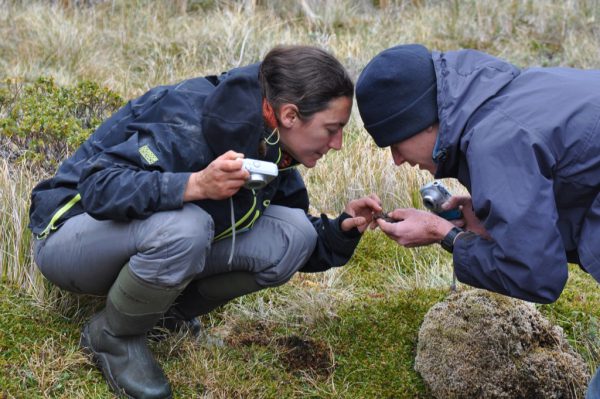
If you’ve got some cash to spare then we thoroughly recommend contributing to their Wetlands Education Project. If you’ve been using the engine – and especially if you’ve been using it right here, in Patagonia or Tierra del Fuego – it seems to us like a very good way of offsetting that sin.
If you’re planning on cruising here we also recommend fitting some kind of car heater on the engine, because you’re going to be running it for half and hour or an hour each evening while you get into the caleta and make yourself secure – so you might as well make use of the heat which is inadvertently generated. We’ve also been using an electric kettle. While the engine is on, and chucking out plenty of power, I fill thermoses with hot water which can then be used for cooking or washing.
Having drawn attention to all the ‘cons’ of this part of the world I will now advertise its ‘pros’:
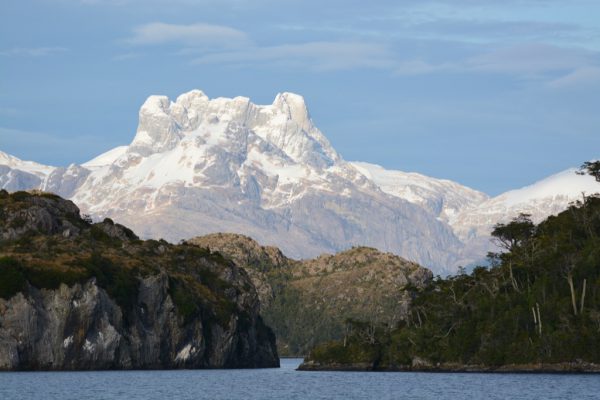
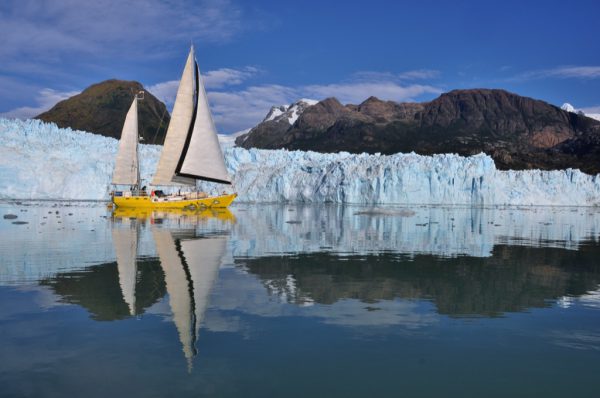
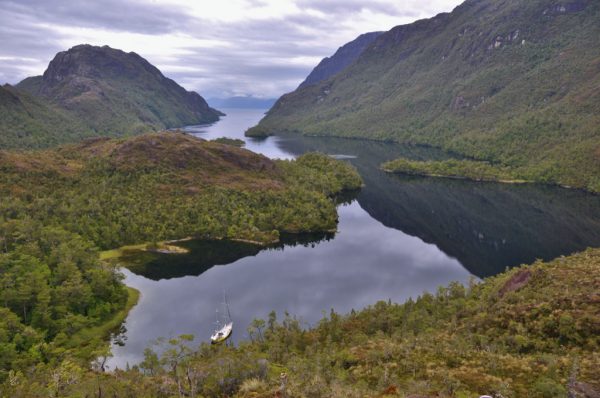
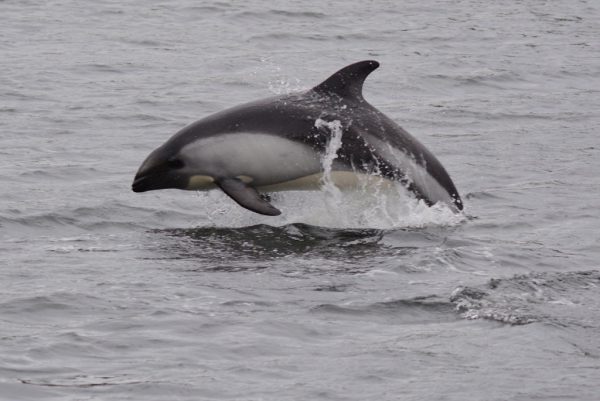
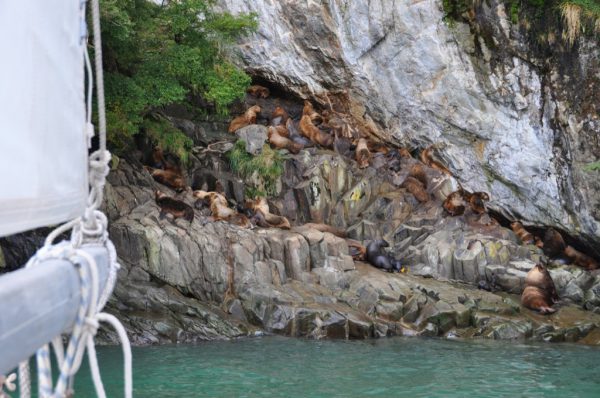
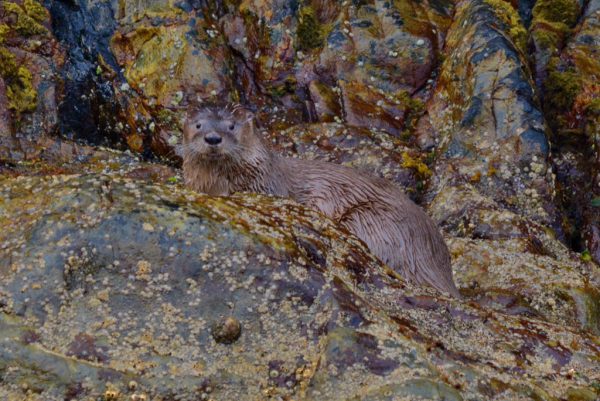
Whales spouting, condors circling, kingfishers yackering, hummingbirds in the rigging…
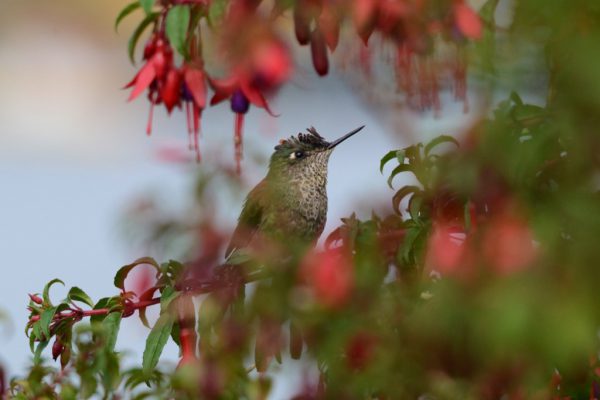
Hmmm… And now this is beginning to look like a holiday brochure: ‘Come to Patagonia!’
Travelling with us on this recent journey was a young Chilean girl who we met in Natales. For Tania, the sealions and the dolphins were the highlight of our trip. She is about to head for university and begin training as a vet, but as a result of her recent intimate encounters with the local wildlife she now has less interest in caring for kittens and puppies and hopes to be able eventually to work with cetaceans.
Caesar, too, was very pleased to see so many dolphins; but I think that the Ship’s Naturalist, fond as she is of dolphins, was even more fascinated by the smaller beings which she spotted hiding in the peat-bogs. Besides finding dozens of toads she also recorded three different types of tadpole; and she scooped up a dragonfly larva and, a day or two later, watched it climb out of its skin and sprout wings.
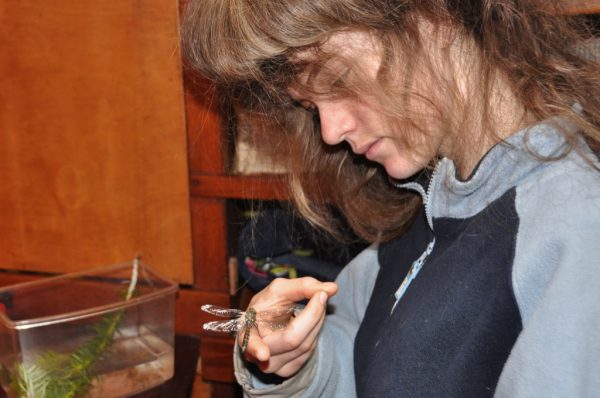
As for me, my favourite day during this trip was undoubtedly the one that we spent dodging ice-floes in the Calvo estero, in the Peel inlet. And after we’d wriggled our way up the estero – again, going where only the engine could have got us – travelling at least two miles further than would have been possible on the previous day, when the place was solid with ice, we glanced over our shoulders and found that – YIKES! – the ice had come in again behind us! Thus, the next two hours were spent bashing our way out.
Yes, well that’s why we built ourselves a steel boat! – but notwithstanding the confidence that he has in the welding, I suspect that this was Nick’s least favourite day…
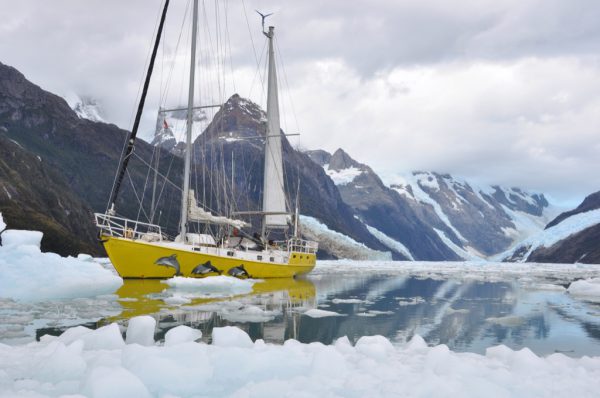
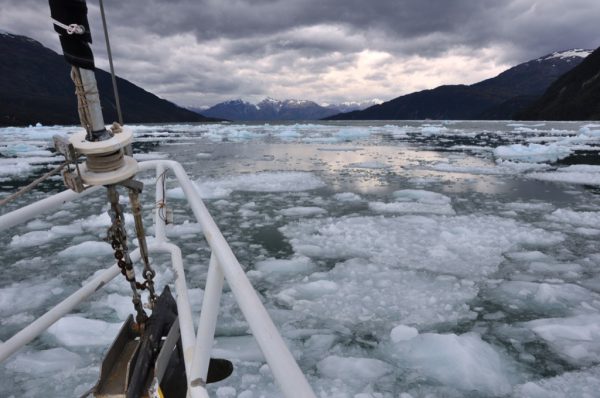
Over the course of the next few weeks we will tell you more about our journey. Or at least, we’ll try to. If we don’t succeed – if you don’t hear from us – it’ll be because we’re still ‘on the trail’. We’re still wandering our way north through this wilderness wonderland, and finding the time to write about something while you’re still in the midst of doing it is not always easy.

Yo. Saying jambo (again) hoping to hear from you.
Cheers
David
Hi Dave, good to hear from you. I’ve passed your address on to my dad, but we’re leaving here today and will be in the channels for a few weeks so you won’t hear from him until we’re next online…
Hope all is well with you. Best wishes.
Great post Oh to leave the 9-5 and head into the wide blue yonder
Get out there!
Man this looks amazing! trying to see more of what the boat looks like on the inside – you guys don’t have like a tour of the boat?